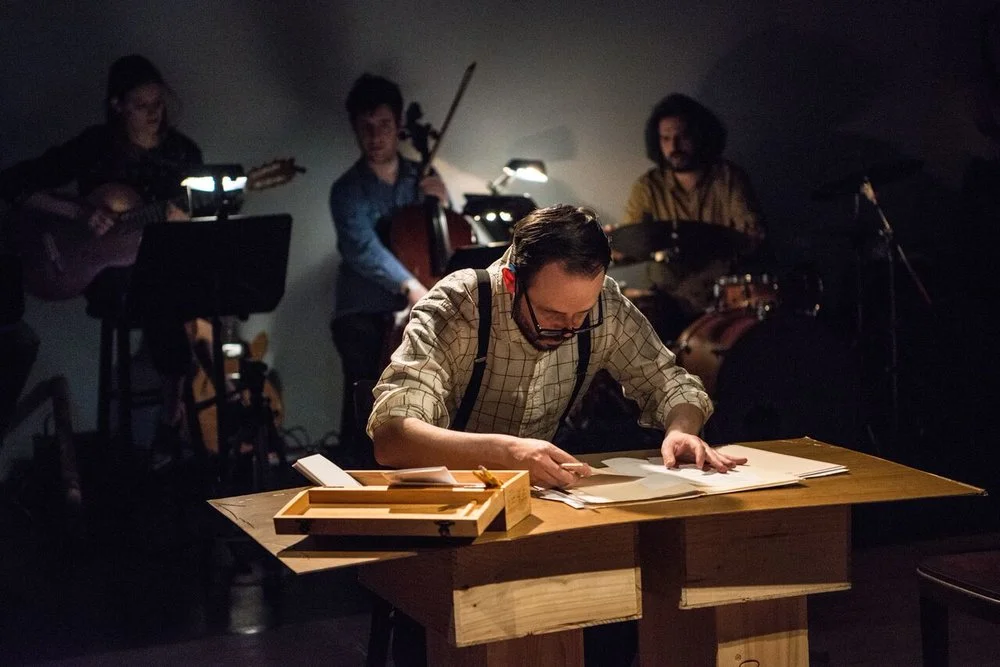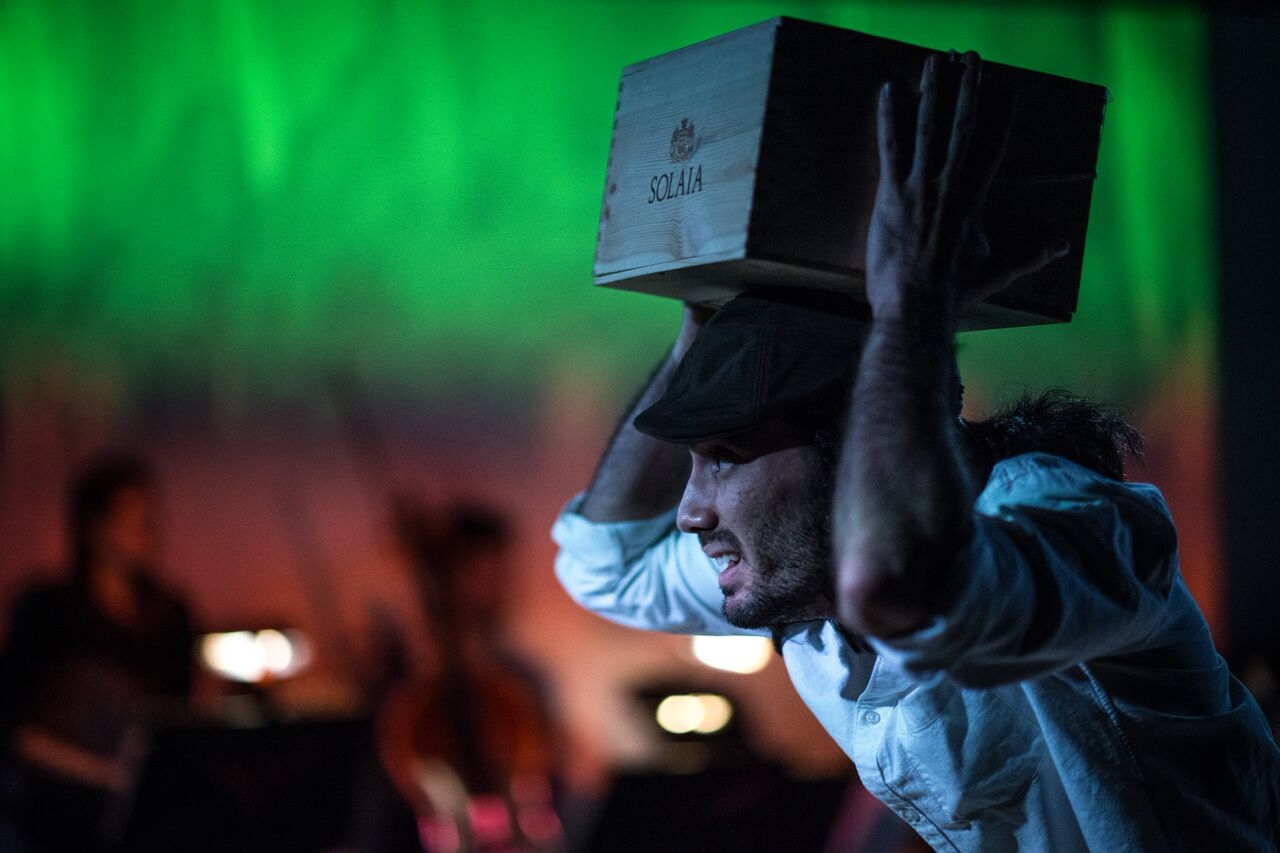The Experience of Translation
Theater is a uniquely collaborative art form, uniting the widely disparate talents and focuses of often dozens of individuals to create one fully realized spectacle for the audience. It can often feel like the various contributors – actors, technicians, designers, writers, choreographers – are speaking different languages. But what if we took that idea a step further? Really leaned into it?
Azul Otra Vez (Blue, Revisited) is “part musical, part adaption, part play with music surrounding Ruben Dario’s life and work. The piece combines the author’s fictional characters and biographical elements into one tale about a poet in turn of the century Latin America struggling to make his art and his identity in a post-industrial world: a time of cultural change, immigration and economic fluctuation, not dissimilar to the one we are living today.” The book, by Melís Aker, is in English, while the lyrics, by Jacinta Clusellas (sometimes adapted from Dario), are in Spanish (with simultaneous English translation). The music, a jazz and folklore fusion, serve as a third language of sorts.
I spoke with playwright Melis Aker, who wrote the book for this musical, soon after a recent showing of Act I of Azul at BRIC.
What do you mean by "bilingual theater?" Would you say theater is an inherently bilingual/multilingual artform?
I believe the phonetic musicality of Spanish, Dario's language in particular, and certainly the convention of using music in the storytelling all contribute to the experience of this piece being bilingual in nature. I do think language conveys intentionality, and points to a signifier or reference beyond itself. In that sense, when an experience is bilingual, there are multiple signifiers, which is most certainly what I believe theatre as an artform does almost immediately; it points outside of itself, from within, and music is merely another tongue. I think when there is a need to identify a piece of theatre as bilingual like we did with Azul, Otra Vez, this means that there will be another global language being used throughout. We felt it was important for us to label this piece as "bilingual" so that we didn't feel trapped within the material and narrative to keep justifying why there are switches between the two languages. We saw this as an opportunity to point out that, despite English being the canonical norm and global tongue, Spanish exists unanimously in this world, just like English would in any other given play, without explanation or justification.
What inspired you to explore the multilingual experience in this way?
As a native of Turkey, and a traveler at heart, I think I am inherently drawn to experiences that convey duality, both linguistically and otherwise. I notice that when I speak in my respective languages, I almost transform in tone and personhood. And I often wonder how this changes the experience of me for others. When Tatiana approached me about this project, I had merely read about Ruben Dario in the most rudimentary of terms: as "the father of Modernism in Latin America." For me, here, there were multiple levels of storytelling I had to consider when trying to deepen my understanding of his material, and the narrative extracted from it. I had to consider my gaze, as a Turk, with English as her second language, with some rudimentary Spanish, trying to interpret Dario's heightened vocabulary in a side-by-side translation. The interface of music and speaking with Jacinta was what allowed me to enter the core of his tone, and most importantly fill in the gaps of translation. I think we often try to fill in the gaps of translation in our day to day lives, be it through interpreting social gestures, recognizing our perceptions, fleeting thoughts and feelings, or through intellect. So I do think externalizing this experience of translation through a collaborative adaptation has definitely helped me strengthen this muscle!
Do you think theater is especially well suited to this form of storytelling?
Most definitely. I think the element of live performance, the sound of language, coupled with gesture, is what opens up different avenues with which we can interpret or unearth meaning in our collective channels of communication.
Why the story of Ruben Dario? And why did it need to be told this way? When did music become part of the project?
Jacinta had composed her album, "El Pajaro Azul," a couple of years ago. It was through her music that I was introduced with Dario more intimately. So in that sense, music was definitely at the basis of this project. We always knew it would be a part of the storytelling, but the challenge was in trying to figure out how, and why. There is a certain nostalgia in Dario's words and style that reminded me of modernist writers from Turkey. His heightened language is almost reminiscent of the classics. And most importantly, I think there is an inherent mythology in Dario's world and language, which is what I believe makes it suitable for rituals and performance.
What's next for this piece?
We are hoping to really solidify Act II, and then have a re-look at Act I to bridge the two worlds together. Ideally, we would love to get a chance to develop it at Ars Nova, the Sol Project, or Bushwick Starr! Keeping our fingers crossed as we try chipping away more and more at the core of the narrative!
This is part of a series on Azul, Otra Vez (Blue, Revisited) and multilingual theater.
“Language also contains culture; there are things that cannot be translated…” A conversation with Tatiana Pandiani on creating multilingual theater.
“We think of music as the third language in this piece….” Jacinta Clusellas’s music and reflections on the creation of Azul Otra Vez.










